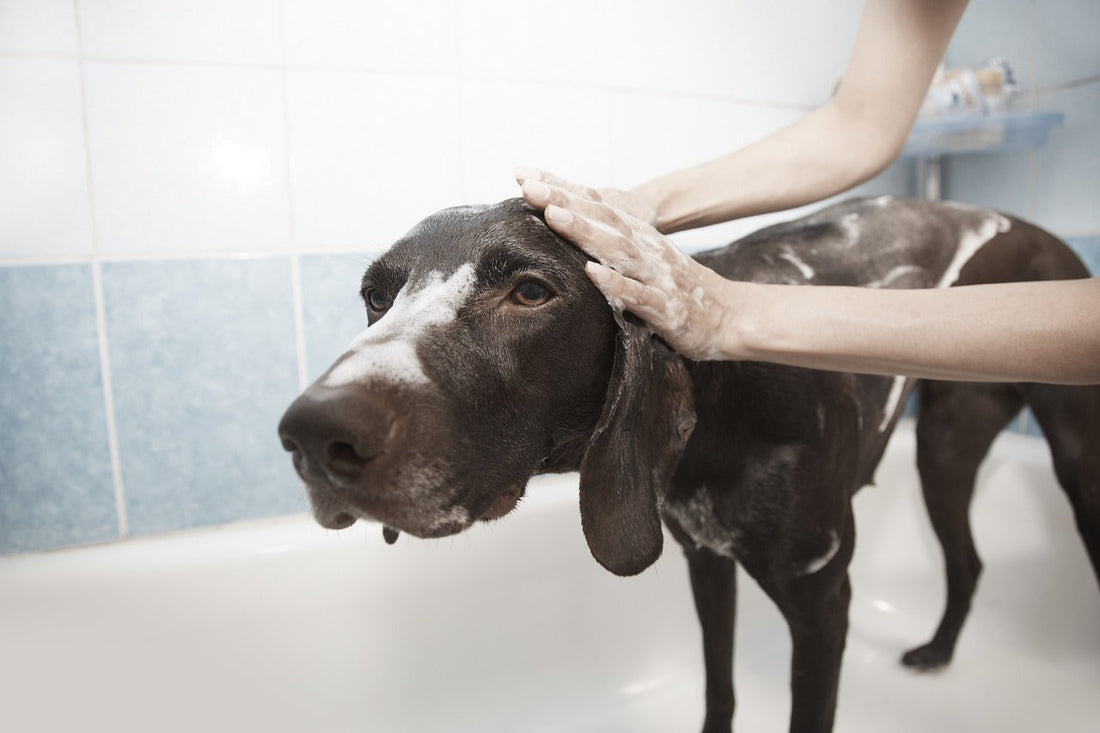Bathing your dog is an important part of grooming that helps keep them clean, healthy, and smelling fresh. However, not all dogs love bath time, and some may find it stressful. By following a calm, positive approach, you can make bath time an enjoyable experience for both you and your dog.
Here’s a step-by-step guide to help you bathe your dog safely and effectively:
1. Gather the Right Supplies
Before you start, make sure you have everything you need. Here’s a checklist of supplies:
- Dog-friendly shampoo: Use a mild, gentle shampoo specifically made for dogs, as human shampoos can be too harsh for their skin.
- Towel: A large, absorbent towel for drying.
- A detachable shower head or a cup: To rinse your dog.
- Brush: To remove any tangles or mats before the bath.
- A bathtub or a sink: Depending on your dog’s size, you can bathe them in a bathtub, a shower, or a sink.
- Treats: These can be used to reward your dog after the bath or to keep them distracted and calm during the process.
2. Prepare Your Dog
- Brush their coat: Start by brushing your dog’s fur to remove any tangles or mats. This will make the bath easier and help prevent discomfort.
- Check for skin issues: While brushing, check for any signs of irritation, bumps, or cuts on your dog’s skin. If you notice anything unusual, consult your vet before proceeding with the bath.
3. Make the Environment Calm
Make sure your dog is calm and relaxed before you start the bath. If your dog is anxious, take some time to calm them with gentle petting, soft speaking, or even a treat. The bathroom should be a calm, quiet environment, free of distractions.
4. Wet Your Dog
- Use lukewarm water: Fill the tub, sink, or shower with lukewarm water, ensuring it’s not too hot or too cold.
- Slowly wet your dog: Start by gently wetting your dog’s fur with a cup or a detachable shower head. Avoid spraying water directly on their face, as this can startle them. Focus on wetting the body and legs first, gradually moving to the head.
5. Apply Dog Shampoo
- Use the right amount: Pour a small amount of dog shampoo into your hand and lather it. Start from your dog’s neck and work your way down their body, being careful not to get shampoo in their eyes, ears, or nose.
- Massage gently: Massage the shampoo into your dog’s fur, working it through their coat. Be gentle, and make sure to cover their entire body.
6. Rinse Thoroughly
- Rinse off the shampoo: Once the shampoo is fully lathered in your dog’s fur, rinse them thoroughly with lukewarm water. Make sure all the shampoo is washed away, as leftover soap can irritate their skin.
7. Clean Their Face and Ears
- Face wash: Use a damp washcloth to gently clean your dog’s face. Avoid getting soap near their eyes, and use only water to clean around their nose and mouth.
- Ears: If your dog has floppy ears, gently wipe the inside of their ears with a damp cotton ball. Avoid inserting anything deep into the ear canal.
8. Dry Your Dog
- Towel dry: After rinsing, gently pat your dog with a towel to remove excess water. Be sure to dry their ears, legs, and belly thoroughly. If your dog has long hair, you can use a hairdryer on a low, cool setting to help dry them, but be cautious of the noise if your dog is sensitive to it.
- Allow to air-dry: Let your dog air-dry in a warm, comfortable space. Avoid allowing them to run outside or play in puddles immediately after the bath.
9. Reward and Relax
Once the bath is over, reward your dog with a treat or some affection. This positive reinforcement will help them associate bath time with good things. If your dog is particularly anxious about baths, try to make bath time a calm, positive experience by offering treats, praise, and gentle care.
Tips for Bathing a Dog
- Frequency: Not all dogs need frequent baths. Dogs with oily coats or those that spend a lot of time outdoors may need more frequent baths, while others may only require a bath every few months. Always consult your vet for advice based on your dog’s breed and lifestyle.
- Brushing after bath: Brushing your dog after a bath will help prevent tangles and keep their coat looking healthy.
- Bathing for puppies: If your dog is a puppy, it’s best to wait until they are at least 8 weeks old before introducing them to bath time. Always be gentle and use puppy-safe shampoo.
Conclusion
Bathing your dog doesn’t have to be a stressful experience. By preparing properly, using dog-safe products, and keeping a calm, positive attitude, you can turn bath time into a pleasant routine for both you and your dog. With the right approach, your dog will not only stay clean but will also feel happy, relaxed, and cared for.

